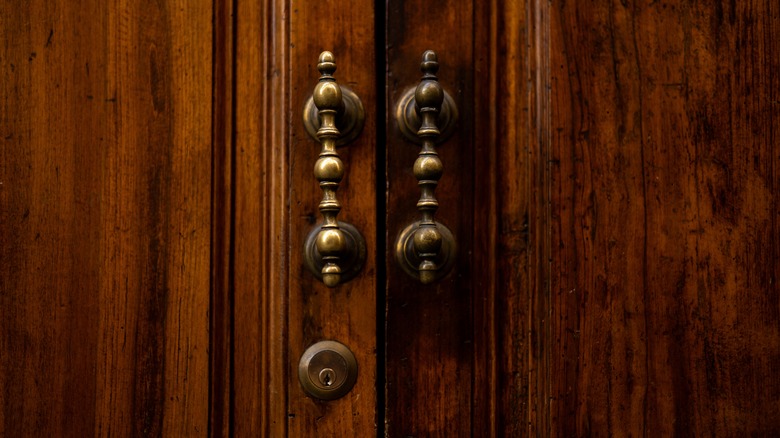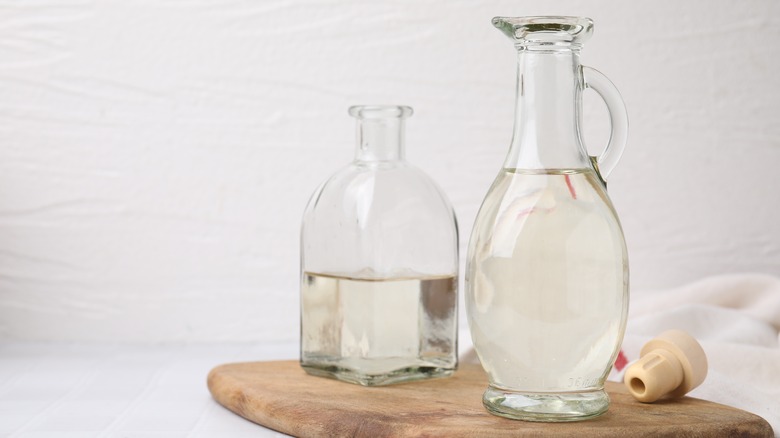Restore The Shine On Antique Door Handles With This Salt And Vinegar Trick
There's nothing like the thrill of the hunt, and it's particularly exciting when you've finally found that antique piece of your dreams at your flea market or thrift store. Once you've successfully bought antique furniture for your home, fixing it up may seem intimidating, because sometimes those pre-loved pieces need a bit of TLC to get shining again. While this may seem like an arduous process, don't let it scare you off from purchasing an antique that looks like it needs a little love. Oftentimes, the key to making the piece look new again is as simple as polishing its metal hardware, like the door handles. And the solution to fixing up some tarnished door handles is as easy as two ingredients you may already have in your cupboard at home.
Grab some salt and vinegar from the kitchen to aid in your antique restoration efforts. Pour two to three tablespoons of iodized salt into a container, and lay your tarnished door handles on the salt. Pour distilled vinegar into the container so that the vinegar completely covers the handles. Let the mixture soak the pieces for at least five to 10 minutes, then pour out the solution and wipe your fixtures down with a textured cloth. Avoid using anything too abrasive, as it may scratch the metal and damage it permanently. After you've wiped the mixture away, the handles will be shining, bright and new, giving your antique piece another life!
How does this salt and vinegar trick work?
These two items' super powers work in conjunction with one another chemically to break down tarnishing discoloration and help you achieve a literally shining result. The salt is abrasive enough yet also delicate enough that when you rub the mixture off of the handles after soaking it in your DIY solution, it'll exfoliate the discoloration away from the metal without scratching it. When you combine that with vinegar's natural acidic properties, which helps corrode the discoloration, you have a winning combo. This solution also works well for many DIY household projects, from killing weeds growing in your yard to removing hard calcium deposits on your shower head.
Some restorers also add lime juice instead of, or in addition to, vinegar, for extra acidity on brass pieces. Other historic materials, like iron, don't need too much acidity, so omit vinegar or lime juice and simply use some soapy water and rub it with a sturdy brush. And if you're looking for a middle ground, then mixing a paste of vinegar, flour, and salt is another solution that scrubs away rust from brass or copper pieces in particular.
Just because something is tarnished right now, that doesn't mean the piece is at the end of its life. Rather, it's an opportunity to add your own history to the piece. And now that it's clean, you get to creatively style your antique home decor the way you want!

